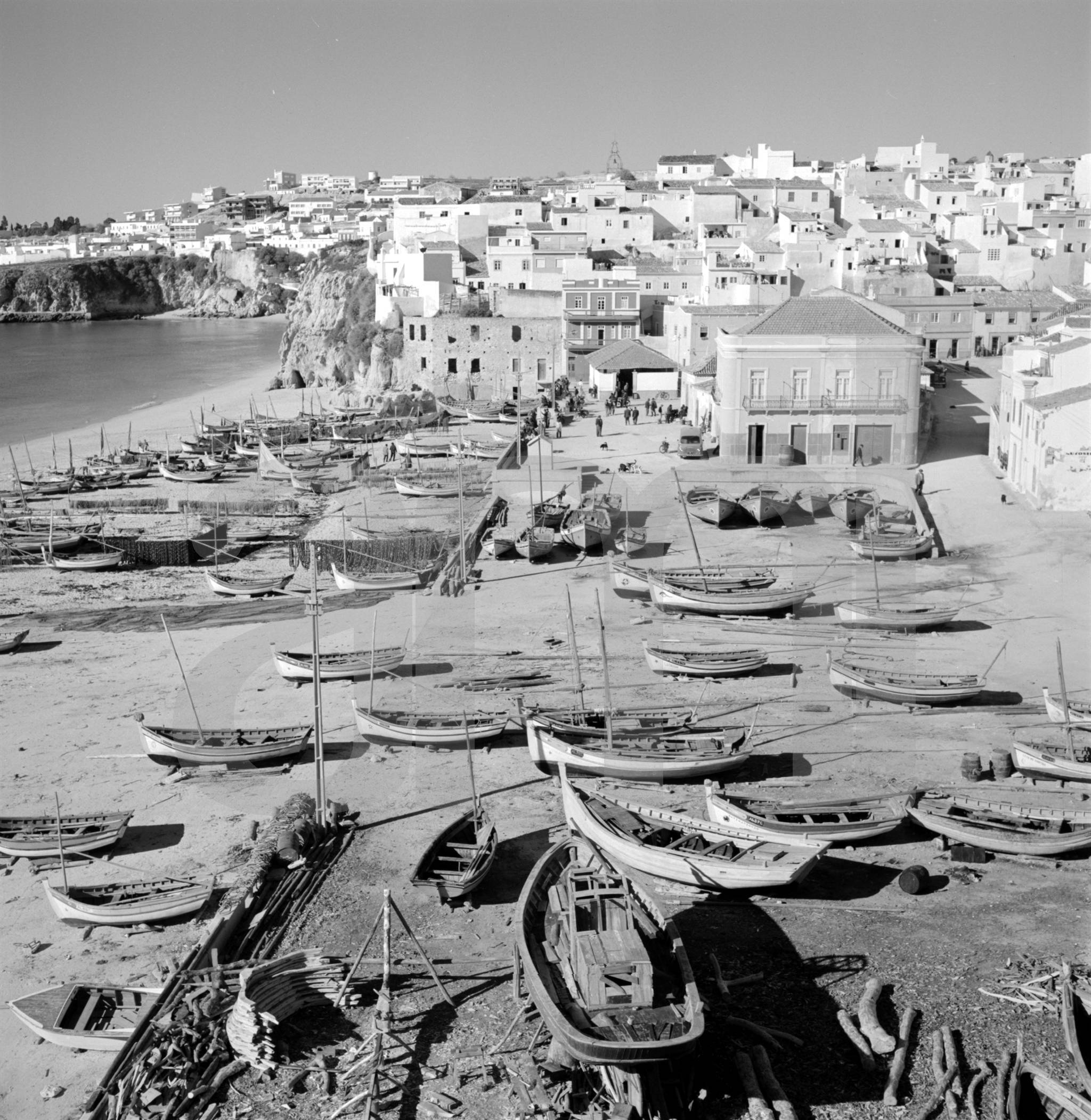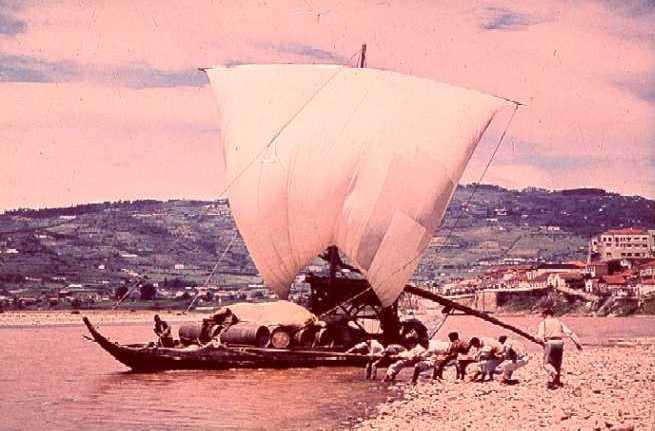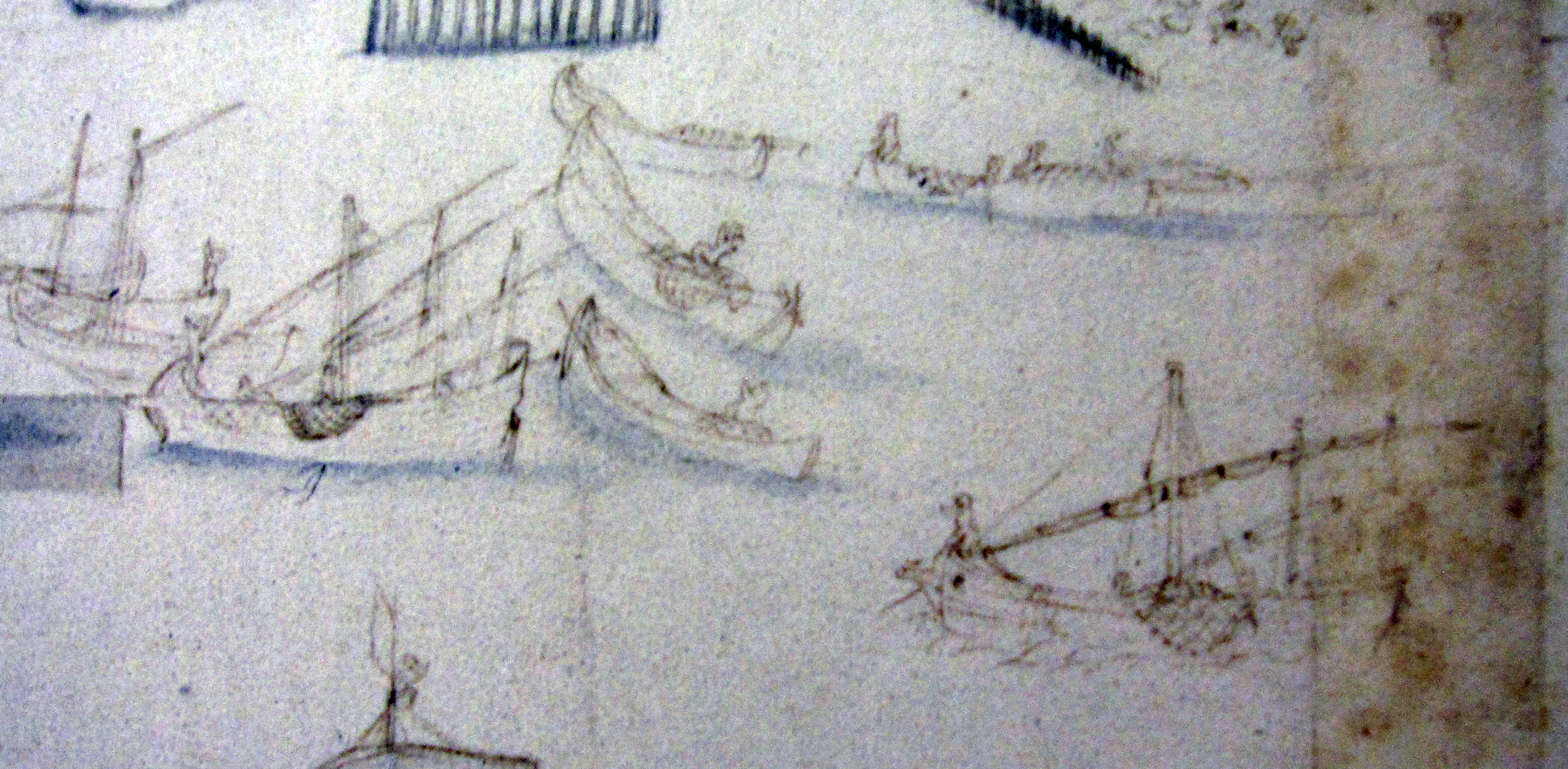Working Watercraft from Portugal
Filipe Castro
“Portugal was a meeting point for many traditions, and a springboard for greater things.”
Richard Barker, “Sources for Lusitanian shipbuilding” in Francisco Alves, ed., Proceedings of the International Symposium ‘Archaeology of Medieval and Modern Ships of Iberian-Atlantic Tradition’, Lisbon, 1998. Lisbon: IPA, 2001: 213-228.
“It is not known definitely which civilization was the first to settle on the shores of the Iberian Peninsula. The Phoenicians early in the first millenium, possibly the Aegeans, and later the Carthaginians established outposts on the Spanish Medirerranean coast as well as the Atlantic coast of Portugal. It is a reasonable conclusion from this that the early boatbuilding practices of thsi entire region were first derived from the eastern Mediterranean.”
Thomas C. Guillmer, A History of Working Watercraft of the Western World, Camden: International Marine / McGraw-Hill, 1994.
“The boats from Santarém raise now their heads further, and change their names from cervilhas to muletas; and this is from four days ago to the present; imagine the change that will occur in one hundred, or two hundred years from now.”
Fernando Oliveira, 1580, O Liuro da fabrica das naos. Fac-simile, transcription and translation into English, Lisboa: Academia de Marinha, 1991: 76.
Introduction
Although the most exciting shipwrecks ever found are large – such as Vasa or Mary Rose – most ships and boats built in the last 50,000 years were comparatively small. It was from this diversity of basic floating solutions, however, that all larger vessels evolved.

Small craft are a cheap way to improvise, to attempt new solutions, to test new ideas, or to copy new technologies. The study of small craft – both from a technical and an ethnographic viewpoint – is an important component of any study of the history of wooden shipbuilding.
Portugal
It is difficult to summarize the rich and diverse maritime culture of the Iberian Peninsula without oversimplifying its reality.
Today’s Portuguese and Spanish territories constitute the extreme southwest of Europe, from which they are separated by the Pyrenees.
In the form of an ox hide, according to Strabo, this stone raft, as it has been called by José Saramago, is a large plateau that slopes gently westward, into the Atlantic Ocean. Along its extensive and diverse coasts the population speaks several different languages and displays several different cultures, which result from a long history of migration, isolation, invasion and contacts with visitors from Africa, northern Europe, the Mediterranean, and the Middle East.

The diversity of Iberian cultures and populations encompasses the influences of the many visitors and invaders that have established colonies and factories on this territory. Phoenicians, Greeks, Carthaginians, Romans, Goths and Arabs left their marks in the architecture, language, agriculture, religious beliefs, and many other Iberian cultural traits, including its shipbuilding techniques.
We know that the shores of Portugal were visited by Phoenician merchants during the first millennium BC, probably sailing on their sturdy shell-first built vessels, with large mortise and tenon joints, such as the ones found on the Uluburun ship. They were followed by Greek sailors, possibly traveling on laced boats, and later by Carthaginian and Roman mortise and tenon joined ships.

In the summer of 2002 the first small plank with mortise and tenon joints found in Portugal was uncovered at the mouth of the Arade River, in the south of Portugal, during survey operations.
Foreign influences probably mixed with local ones. In the first decades of the first century AD Strabo refers rafts, skin craft and dugout canoes in the Iberian Peninsula. We know that the later were extensively used. Five dugouts were found on the margins of Lima River, in the north of Portugal, between 1985 and 2003. Their dates span from the fourth or fifth centuries BC to the tenth or eleventh centuries AD.
From the less complex craft, such as dugouts and rafts, to the skeleton based Tagus working craft, designed with graminhos, many traditional boats have been studied, recorded and published by scholars such as Baldaque da Silva, Octavio Lixa Filgueiras, Carlos Carvalho, Maria João Andrezes, or Ivone Magalhães, among others. Henrique Maufroy de Seixas left us a tremendous archive of pictures, drawings and models, housed in Lisbon, at Museu de Marinha.
We have several lists of ship’s and boat’s names, types, sizes, and characteristics. Some of these have been recorded or preserved, and some are lost forever.
It is impossible to know how many types of vessels were developed, utilized and abandoned through time. A few lists exist but most types are forgotten and in some cases all we have are the boats’ names.
Lists
Quirino da Fonseca, “Memórias de arqueologia marítima portuguesa,” Separata dos Anais do Clube Militar Naval. Lisboa: Tipografia J.F.Pinheiro, 1915.
Baldaque da Silva, Estado Actual das Pescas em Portugal. Lisboa: Imprensa Nacional, 1892 – Cap. 3.
Filgueiras, O. L., “Barcos”, capítulo VIII de A Arte Popular em Portugal. Lisboa: Editorial Verbo, 1963.
References
Filgueiras, Octávio Lixa, Açores e Madeira: relatórios da viagem de serviço efectuada de 4 a 14 de Abril de 1976. Lisboa: Ministério da Comunicação Social, Secretaria de Estado da Cultura, Direcção-Geral do Património Cultural, 1976.
Filgueiras, Octávio Lixa, Algumas cenas e cenários ribeirinhos de Vila Nova de Gaia em gravuras dos séculos XVII a XIX. Vila Nova de Gaia: Gabinete de História e Arqueologia, 1984.
Filgueiras, Octávio Lixa, Algumas reflexões para a definição duma política de defesa do nosso património arqueológico subaquático. Lisboa: Academia de Marinha, 1989.
Filgueiras, Octávio Lixa, Arquitectura do rabelo. Porto: Rozès, 1992.
Filgueiras, Octávio Lixa, Barco Rabelo: um retrato de família. Porto: Cálem, 1989.
Filgueiras, Octávio Lixa, Barcos de pesca de Portugal. Coimbra: Junta de Investigações Científicas do Ultramar, 1981.
Filgueiras, Octávio Lixa, The Barco do Mar and the thera boats breed. Piraeus: Hellenic Institute for the Preservation of Nautical Tradition, 1987.
Filgueiras, Octávio Lixa, Barcos do Douro- comentários técnicos da sua iconografia (séculos XVIII-XX). Vila Nova de Gaia: Gabinete de História e Arqueologia, 1994.
Filgueiras, Octávio Lixa, Os barcos da Nazaré no panorama da nossa arqueologia naval. Lisboa: Centro de Estudos da Marinha, 1981.
Filgueiras, Octávio Lixa, and Alfredo Barroca, O caique do Algarve e a caravela portuguesa. Coimbra: Junta de Investigações do Ultramar, 1970.
Filgueiras, Octávio Lixa, and Alfredo Barroca, O caique do Algarve e a caravela portuguesa. Coimbra: RUC, 1969, vol. XXIV (I Reunião de História da Náutica), 405-441 (reed. Coimbra: AECA, 1970, sep. XLVI).
Filgueiras, Octavio Lixa, Canoas de tablas de tipo mesopotamico en zonas de influencia tartesica. Madrid: Ministerio de Cultura, Direccion General de Bellas Artes y Archivos, Subdireccion General de Arqueologia y Etnografia, 1985.
Filgueiras, Octávio Lixa, Comentários técnicos da Tese do Moçarabismo Náutico. Lisboa. Centro de Estudos da Marinha, 1975.
Filgueiras, Octávio Lixa, Common European Maritime Heritage Congress”- Nederlands Scheepvaartmuseum- Amsterdam, 31 Agosto – 4 Setembro 1992: Relatório da participação no congresso. Porto: Centro de História da Universidade do Porto, Faculdade de Letras, 1992?
Filgueiras, Octávio Lixa, “The Decline of Portuguese Regional Boats” in Maritime Monographs and Reports No. 47. National Maritime Museum Greenwich, London, UK, 1980.
Filgueiras, Octávio Lixa, “Gelmirez e a reconversão da construção naval tradicional do NW Sec. XI-XII: Seus prováveis reflexos na época dos Descobrimentos”, Actas do Congresso Internacional Bartolomeu Dias e a sua Época, 2: 539-576, Porto: Universidade do Porto, Comissão Nacional para as Comemorações dos Descobrimentos Portugueses, 1989.
Filgueiras, Octávio Lixa, “Gelmirez and the reconversion of the W.Peninsular shipbuilding tradition (XI-XIIth centuries)” in Carvel Construction Technique, Ed. R.Reinders & Kees Paul, Oxford 1991: 32-41.
Filgueiras, Octávio Lixa, Introdução ao “Caderno de todos os barcos do Tejo tanto de carga e transporte como d’ pesca, por João de Souza, Lente d’ arquitectura naval e desenho da Companhia de Guardas Marinhas”. Lisboa: Academia de Marinha, 1985.
Filgueiras, Octávio Lixa, As Jangadas de Botos. Porto: Ministério da Cultura, Delegação R. do Norte, Centro de Estudos Humanísticos, 1984.
Filgueiras, Octávio Lixa, A Jangada de S. Torpes: um problema de arqueologia naval. Lisboa: Centro de Estudos da Marinha, 1977.
Filgueiras, Octávio Lixa, ed., Local Boats, Proceedings of the 4th International Symposium on Ship and Boat Archaeology, Porto, Portugal, 1985. London: BAR International Series 438, 1988.
Filgueiras, Octávio Lixa, Museus de marinha e de arqueologia naval. Lisboa: Academia de Marinha, 1978.
Filgueiras, Octávio Lixa, A nave esculpida numa Torre da Sé do Porto: ensaio de identificação. Porto: s. n., 1983.
Filgueiras, Octávio Lixa, Navegação à vela: barcos à vela dos rios portugueses. Lisboa: s. n., 1982.
Filgueiras, Octávio Lixa, Os painéis introdutórios da exposição de Oslo- critérios e conceitos. Lisboa: Academia de Marinha, 1985.
Filgueiras, Octávio Lixa, Pré-aviso sobre acções cautelares a promover nas zonas portuárias dos Coutos de Alcobaça. Alcobaça?: s. n., 1978.
Filgueiras, Octávio Lixa, Uma presumível herança germânica na construção naval tradicional portuguesa. Lisboa: Academia de Marinha, 1985.
Filgueiras, Octávio Lixa, “A presumptive Germanic heritage for a Portuguese boat-building tradition” in Medieval ships and harbours in Northern Europe, ed. S. McGrail, Oxford 1979: 45-75.
Filgueiras, Octávio Lixa, A propósito da protecção mágica dos barcos do Douro. Porto: s. n., 1976?
Filgueiras, Octávio Lixa, A propósito da protecção mágica dos barcos. Lisboa: Centro de Estudos da Marinha, 1978.
Filgueiras, Octávio Lixa, Remanescentes de formas de navegar pré-romanas em uso no Noroeste Peninsular. Porto: s. n., 1974.
Filgueiras, Octávio Lixa, Santos Graça: contribuição para o estudo das raízes ideológicas duma obra. Póvoa do Varzim: s. n., 1982.
Filgueiras, Octávio Lixa, Traineiras. Lisboa: CTT Correios, 1994.
Filgueiras, Octávio Lixa, Zonas de influência tartésica. S. l.: s. n., s. d.
McMillan, Beverly, Susannah Livingston, and Susan Beaven Rutter, eds., Aak to Zumbra, Newport News, VA.: The Mariner’s Museum, 2000.
